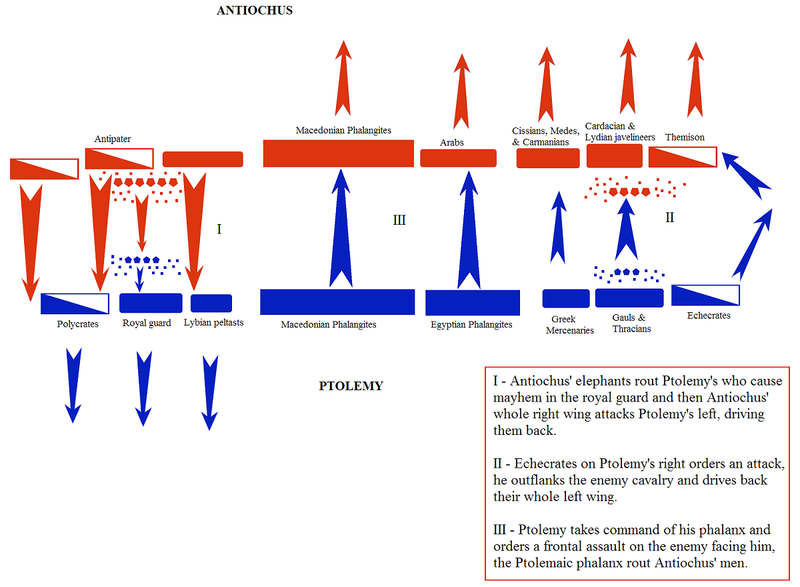The Battle of Raphia occurred in 217 BC near modern Rafah during the Syrian Wars. It was documented by Polybius and the orders of battles listed tens of thousands of foot soldiers, thousands of cavalry and elephants on both sides, making it the only known battle between Asian and African elephants.
On one side was Ptolemy IV, the King of Egypt, and on on the other was Antiochus III the Great, the King of the Seleucid Kingdom, which was formed after Alexander the Great died and his empire was divided, and covered lands from Persia to northwest India.
With the rise of taxonomy and zoology, scientists eventually turned to ancient history. Ptolemy had gotten his elephants from Eritrea but why were they so much smaller than their Indian counterparts? According to Polybius, the smaller African elephants could not stand up to the greater size and strength of their Indian opponents and were routed easily.
In 1948, William Gowers reasoned that Ptolemy must have fought with forest elephants. Lacking evidence otherwise, the idea has been commonly mentioned in many papers. But was it so? Did Ptolemy employ African savanna elephants (Loxodonta africana) or African forest elephants (Loxodonta cyclotis) in the Battle or Raphia?

The disaster among the elephants didn't cost Ptolemy the battle, his Egyptian phalanx held, Image link: Wikipedia.
"What everyone thinks about war elephants is wrong," said Alfred Roca, a professor of animal sciences and member of the Institute for Genomic Biology at the University of Illinois at Urbana-Champaign, who led the new research.
"Until well into the 19th century the ancient accounts were taken as fact by all modern natural historians and scientists and that is why Asian elephants were given the name Elephas maximus," said Neal Benjamin, an Illinois veterinary student who studies elephant taxonomy and ancient literature with Roca. "After the scramble for Africa by European nations, more specimens became available and it became clearer that African elephants were mostly larger than Asian elephants. At this point, speculation began about why the African elephants in the Polybius account might have been smaller. One scientist, Paules Deraniyagala, even suggested that they might even have been an extinct smaller subspecies."
"Using three different markers, we established that the Eritrean elephants are actually savanna elephants," said Adam Brandt, a doctoral candidate in Roca's laboratory and first author of the paper. "Their DNA was very similar to neighboring populations of East African savanna elephants but with very low genetic diversity, which was expected for such a small, isolated population."
The markers also revealed that these Eritrean elephants have no genetic ties to forest or Asian elephants, as other authorities have suggested. Roca and Brandt hope their findings will aid conservation efforts.
"We have confirmed that this population is isolated and may be inbred," Brandt said. "This population will require habitat restoration and preservation to minimize the possibility of human conflict. That's really the issue—not having a place to go."
Source: University of Illinois at Urbana-Champaign




Comments